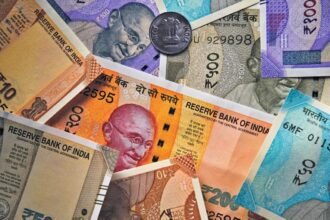Despite the sharp sell-off, the currency could be poised to strengthen in the medium to long term
[SINGAPORE] The yen has weakened dramatically over the past week, tumbling against the US dollar and the Singapore dollar after the ruling Liberal Democratic Party (LDP) elected Sanae Takaichi as its new leader, setting her up to become the nation’s first female prime minister.
The market has swiftly priced in her platform of aggressive monetary and fiscal stimulus, reminiscent of former leader Shinzo Abe’s “Abenomics”, sending the USD/JPY pair surging 3.8 per cent to 153 on Oct 9. By extension, the yen also lost significant ground against the Singapore dollar, with SGD/JPY peaking slightly over 118 in intraday trading on the same day.
However, despite the sharp sell-off, currency strategists believe the so-called “Takaichi trade” driving yen weakness may soon run out of steam, with the currency poised to strengthen in the medium to long term.
A temporary trade
Morgan Stanley said in a note that due to the US-China tensions, the currency pair could be at risk of a downside move, meaning that the greenback could weaken and the yen could strengthen.
“With tactical US-China trade escalation an increasingly likely prospect through to the end of October, we expect that investors will reduce risk – meaning that they will cut their short EUR/USD and long USD/JPY positions – and that the narrative around USD will shift,” the bank’s analysts said.
Investors had been bullish on the greenback, giving easing monetary conditions, Morgan Stanley noted. But should US-China tensions escalate, that could add downside pressure on the US economy with another round of higher US import tariffs, the bank explained.
BT in your inbox

Start and end each day with the latest news stories and analyses delivered straight to your inbox.
Philip Wee, senior FX strategist at DBS, believes the yen’s sharp depreciation following Takaichi’s victory may lose momentum.
“The Diet’s vote to confirm Japan’s first female prime minister… has cast doubts on her ‘Abenomic-style’ policies,” Wee said. He pointed to reservations from Komeito, LDP’s long-time coalition partner, about Takaichi’s policy direction.
Furthermore, Takaichi has begun to downplay the yen’s weakness, likely to avoid scrutiny from the Trump administration, which is sensitive to perceived currency manipulation, Wee said.
This view of a temporary yen dip is shared by Sumitomo Mitsui Banking Corporation (SMBC). Hirofumi Suzuki, chief FX strategist at SMBC, does not expect the current yen weakness to persist for more than a month.
“While the so-called ‘Takaichi trade’ is currently tilted towards yen weakness in its early phase, it… is regarded as temporary at this stage,” Suzuki stated. He does not foresee any immediate impact on US-Japan trade relations from these transitory moves.
However, he cautioned that if yen weakness accelerates and the USD/JPY pair heads towards the 160 mark within one to two weeks, the situation could change. Such a move “would be viewed as more likely” to trigger foreign exchange intervention by the Japanese government to support its currency, he said.
Longer-term strength expected
Looking further ahead, LGT Private Banking Asia has revised its USD/JPY forecast but maintains that the yen will strengthen over the next year. It now sees the pair at 148 in three months, 145 in six months and 142 in 12 months.
The bank’s outlook is predicated on a broader trend of US dollar weakness for the remainder of 2025, driven by anticipated rate cuts from the US Federal Reserve.
“While near-term upside risks remain, we think most vulnerable long USD/JPY positions have been unwound,” LGT noted in its FX outlook report. The private bank’s central scenario anticipates only moderate fiscal expansion from Takaichi’s government, with the Bank of Japan (BOJ) policy normalisation being “delayed but still on course”.
These factors, LGT said, “should help guide USD/JPY lower over the next six to 12 months”.
LGT’s forecast stated that while it would not completely rule out an October hike, it “has become much less probable”. Its USD/JPY forecast was hence revised to slightly higher, to reflect this possible delay from its previous October expectation.
The Overnight Indexed Swap market has increased the odds of a BOJ rate hike at its Dec 19 meeting to a 37 per cent chance, up from 17.5 per cent on Oct 10.
“The market reckons that the yen’s weakness would add to the cost-of-living issue that cost the LDP its majority in both houses of parliament,” DBS’ Wee explained.
Chang Wei Liang, DBS FX and credit strategist, noted that the Japanese yen is approaching its 2024 low against the Singapore dollar, with its value recently dipping below S$0.85 for every 100 yen. “We have not changed our Q4 forecast yet at 0.89, but will assess the impact of any policy changes going forward.”
Meanwhile, Saktiandi Supaat, head of FX research at Maybank, said that the yen’s weakness against the Singapore dollar is being driven by a combination of political, monetary and structural factors.
“In Japan, uncertainty following the LDP leadership outcome has reinforced expectations that fiscal expansion will continue, while the BOJ remains on a very gradual tightening path. Real wages remain weak, and with inflation largely cost-push, markets are sceptical that the BOJ will hike aggressively,” he said.
“This widens the yield differential with Singapore, where the Monetary Authority of Singapore (MAS) maintains a modestly appreciating policy stance, underpinned by resilient growth, safe-haven flows and a strong external balance,” he added.
“In short, policy divergence, fiscal worries and eroding safe-haven appeal have left the yen vulnerable, while the Singapore dollar continues to benefit from its AAA rating and regional safe-haven status.”
Supaat projected the yen and Singdollar pair to be at 0.9 in Q4 2025, rising to 0.95 by Q3 2026.
“This implies SGD/JPY easing from around 111 at end-2025 to about 105 by Q3 2026 and Q4 2026,” Supaat told The Business Times.
OCBC FX and rates strategist Christopher Wong said that the SGD/JPY may continue to stay elevated around 117 to 118 levels in the interim.




















